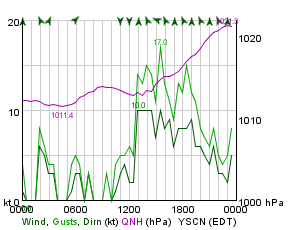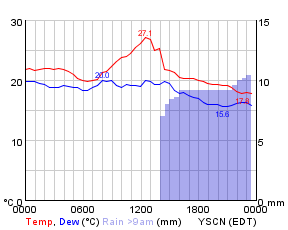Flying Training
Lesson 44: Instruments 3
Saturday 17 March 2007, 11.00am in Citabria WKM. Instructor: Rob Marshall.
Weather: warm (27°C). Wind NW at 4 knots gusting to 5 at 11.30am; S at 10 to 15 at 1pm.
This was the third and final instrument lesson before the GFPT. I'm writing it up almost six months after the event; little did I suspect the hiatus in my progress that would follow this lesson. Fortunately I made some notes at the time.
The aircraft was filled up just before our flight, and in response to my question, Rob stated emphatically that trusting that someone else had checked the fuel would NOT be a good idea. Actually I've read several accounts of incidents where a private pilot (generally an owner-pilot) hasn't checked his tanks before a flight and has run out of fuel.
To get at the front fuel drain on WKM, open the oil inspection hatch, then reach down, find and turn the knob and hold the receptacle under the tube under the bottom of the cowling. It's a two-person job unless you happen to be an orang utan, which is presumably why it was moved on later models.
 After a long wait at the hold point, take-off and climb was uneventful. Rob
handed me the hood, and asked me to climb to 2000 feet. Then I made 360°
rate 1 turns
(ie 2 minutes for a full circle) to left and right. Rob
cautioned me not to overbank. Overbanking in cloud could lead to a spiral
dive. (In this case the recovery action is to power back, relax the back
stick pressure and roll wings level.)
After a long wait at the hold point, take-off and climb was uneventful. Rob
handed me the hood, and asked me to climb to 2000 feet. Then I made 360°
rate 1 turns
(ie 2 minutes for a full circle) to left and right. Rob
cautioned me not to overbank. Overbanking in cloud could lead to a spiral
dive. (In this case the recovery action is to power back, relax the back
stick pressure and roll wings level.)
Then came a climb and descent. Always make a cruise descent on instruments - I chose 1800 rpm.
Next came some partial panel work. With the AI covered by a post-it note I made turns, climbs and descents using the remaining instruments. The turn co-ordinator is used for angle of bank, and the altimeter and airspeed for maintaining level flight (ie airspeed increasing means you're descending and airspeed decreasing means you're climbing).
We finished with some unusual attitude recoveries on a partial panel. We must have done 4 or 5 pairs of unusual attitudes as Rob wasn't happy with my recovery. I was overcontrolling and instead of simply arresting the descent (ie stick back until the altimeter is steady) I was then climbing with the attendant risk of stalling. It was pretty hard, and Rob was obviously setting high standards. At the end he asked me to take the hood off while he showed me how it would all go wrong with overcorrection, by throwing the aircraft on its wing and then hauling back on the stick until it stalled.
 By this time we were over the F5 near Menangle and I climbed to 1800 feet and
made an inbound call: "Camden Tower, Citabria WKM at Menangle, 1800 feet,
inbound with Delta." The tower asked me to report at Narellan, at 1800
feet, and I read this back. Narellan was picked up by following the Hume
Highway north and picking up the Narellan exit. I don't know if I would have
figured out Camden's location on my own (it was well to the left, with runway
24 nearest) as I haven't flown in this part of the training area before. I
reported at Narellan and was asked to join downwind. Rob asked me if this
constituted a clearance to descend to 1300 feet and I correctly answered no,
it wasn't. I reported again on downwind and was given number one. It felt
strange having to lose the extra 500 feet, and my landing was, as Rob said,
"untidy", ie I floated and floated and used most of the runway before
leaving by the very last taxiway. At least he said it was a safe landing.
By this time we were over the F5 near Menangle and I climbed to 1800 feet and
made an inbound call: "Camden Tower, Citabria WKM at Menangle, 1800 feet,
inbound with Delta." The tower asked me to report at Narellan, at 1800
feet, and I read this back. Narellan was picked up by following the Hume
Highway north and picking up the Narellan exit. I don't know if I would have
figured out Camden's location on my own (it was well to the left, with runway
24 nearest) as I haven't flown in this part of the training area before. I
reported at Narellan and was asked to join downwind. Rob asked me if this
constituted a clearance to descend to 1300 feet and I correctly answered no,
it wasn't. I reported again on downwind and was given number one. It felt
strange having to lose the extra 500 feet, and my landing was, as Rob said,
"untidy", ie I floated and floated and used most of the runway before
leaving by the very last taxiway. At least he said it was a safe landing.
After the flight, Rob said that pretty much completed the basic training. Only one more area solo and I was ready to sit my GFPT.
Then the very next day Cathy dropped her bombshell...
Photos
 Doug's ute |
 Instrument Flight |
 WKM |
